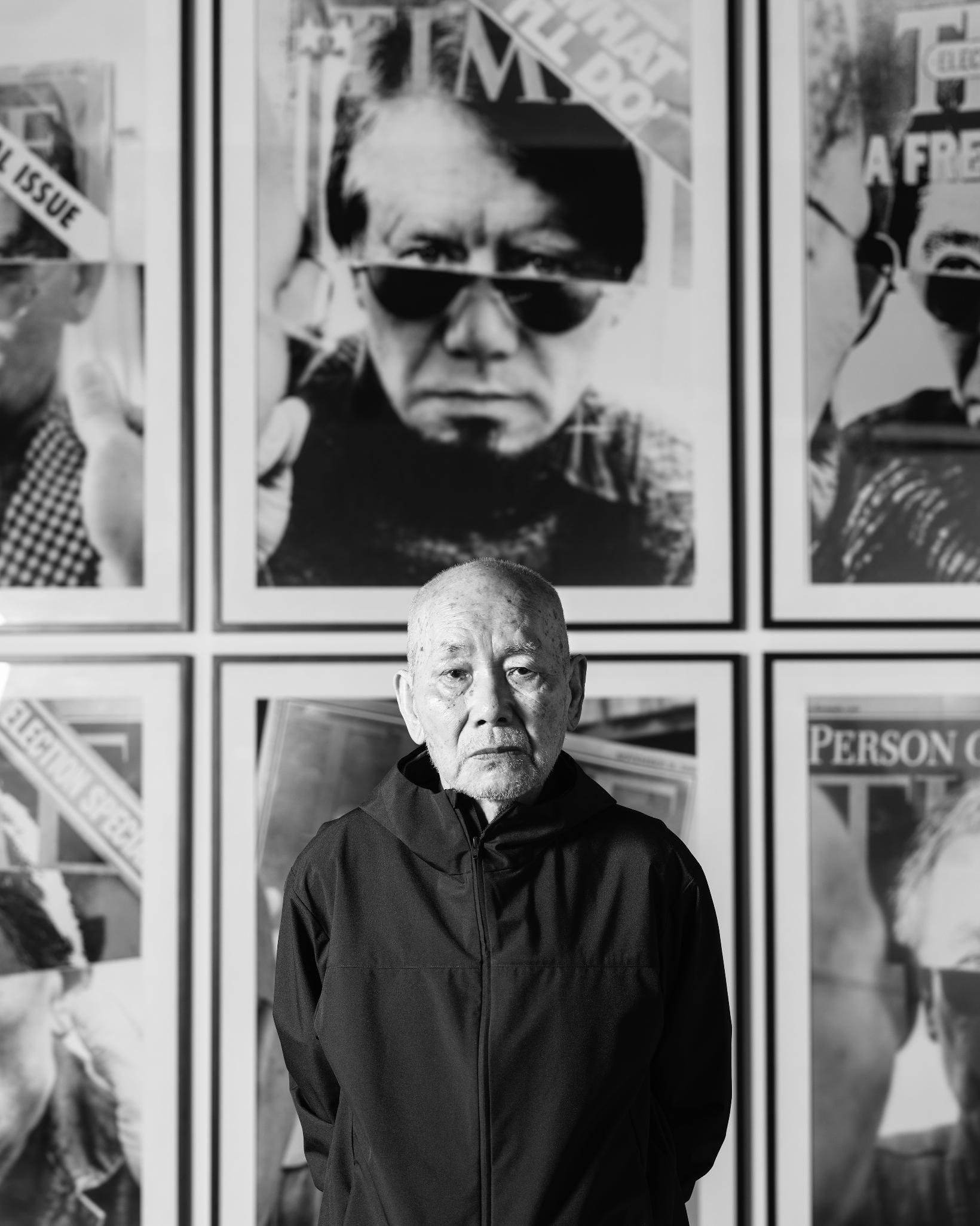
“An alien in Korea, and an alien in Japan—caught between these two worlds, I formed my worldview, which became the foundation of my work.” — Kwak Duck-Jun
Artist Kwak Duk-Jun passed away on July 26, 2025. The family held a private funeral and mourning period following a sudden and unexpected passing, and Gallery Hyundai only announces the news of his passing today. Kwak Duck-Jun (1937-2025) holds a pivotal position in the history of artistic exchange between Korea and Japan. He has served as a key bridge between the two countries’ contemporary art scenes, particularly in the development of experimental art, while devising his distinctive artistic language.
His Weight-scale series, created in 1970, earned high praise from Edward F. Fry (1935–1992), curator at the Solomon R. Guggenheim Museum, New York during his visit to Japan. Indeed, Kwak drew attention from both Korean and Japanese scenes as one of the earliest Korean artists to pursue conceptual art. Since 1969, he actively participated in cross-cultural exhibitions, fostering exchanges with fellow artists Chung Sang-Hwa anundefinedd Park Seo-Bo. By challenging the fixity of normative concept sand exposing the absurdities of our perception of the world, Kwak has gained international recognition for the distinct formal quality of his works. Unbound by a single style, Kwak has established an expansive body of work spanning painting, installation, performance, video, photography, and printmaking, demonstrating diverse approaches even within each field. As seen in his artist notes, key elements of Kwak’s work include not only his commitment to experimentation but also his perspective on history and society as a Zainichi Korean (a Korean person residing in Japan).
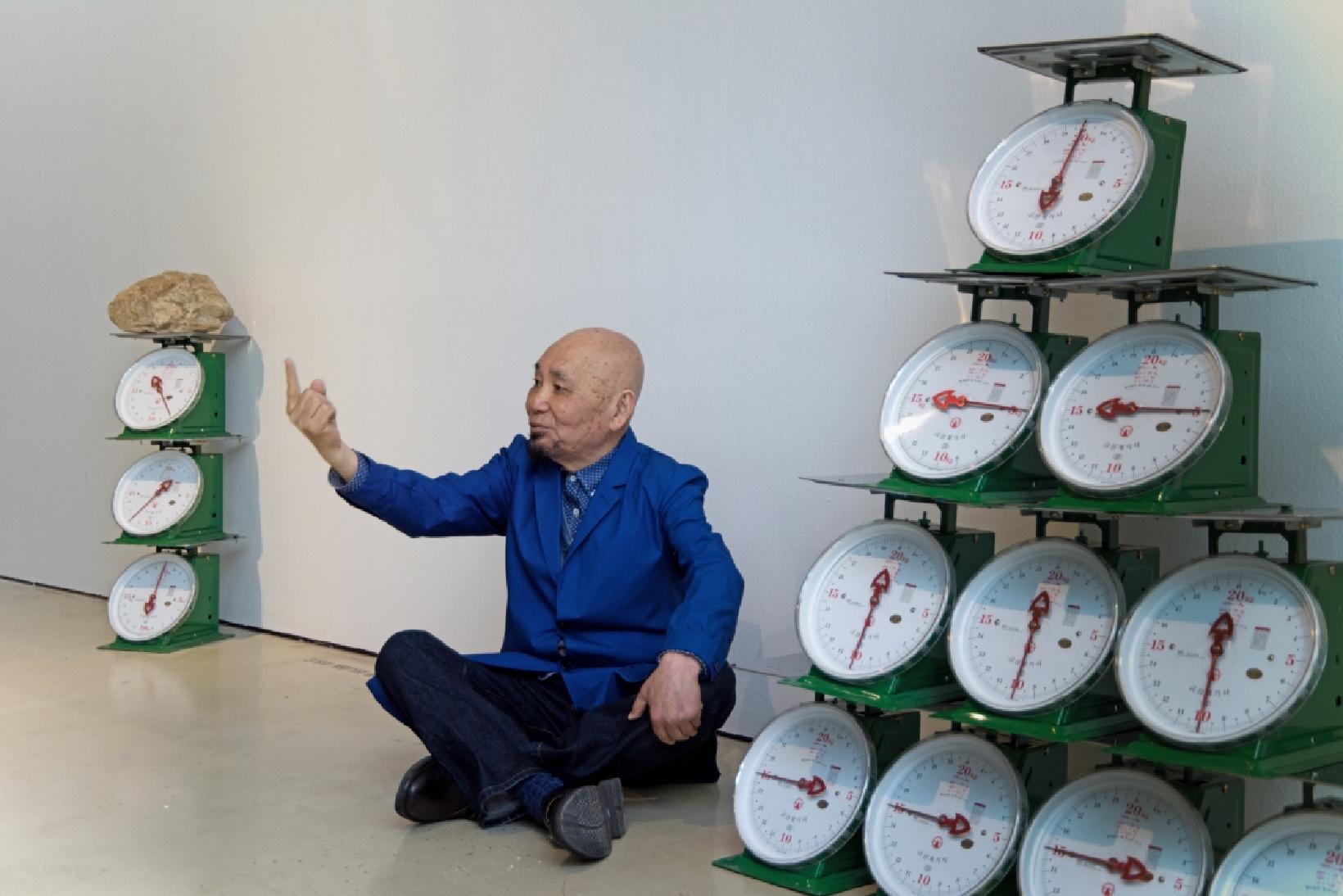
As part of its Reflections on Korean Experimental Art project, Gallery Hyundai presented a solo exhibition of Kwak, whose groundbreaking conceptual works from 1970 profoundly influenced younger artists in both Korea and Japan. The solo exhibition in 2015 introduced his iconic conceptual works, notably a partial reproduction of the Weight-scale series that grounded his presence in the Japanese contemporary art scene. In 2018, another solo exhibition highlighted his paintings from the 1960s, shedding light on his passionate pursuit of art while combatting mortality and his identity as a Zainichi Korean preceding his shift toward conceptual art. Kwak has since been featured in major international biennials and art fairs, further solidifying his place in the history of Korean Experimental art.
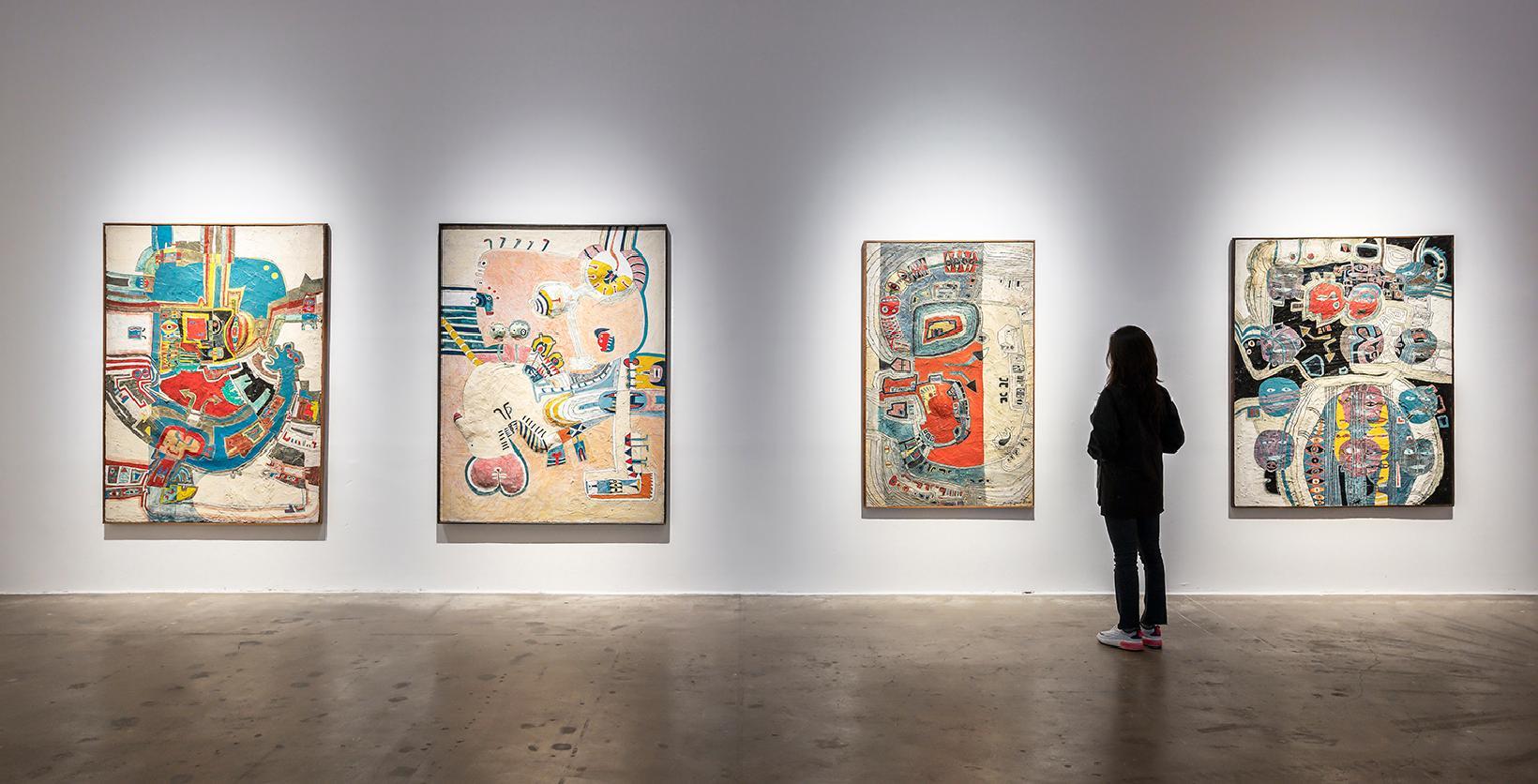
In the mid-1960s, Kwak explored a unique technique in his early paintings using traditional Japanese dyeing methods, creating enigmatic, biomorphic abstractions. However, he discontinued this style by 1969, and throughout 1970, he shifted entirely to conceptual art. These early paintings were since largely forgotten until their first introduction to the public in the 1998 exhibition Kwak Duck-Jun’s Paintings: Another 60’s at Yurakucho Asahi Gallery, Tokyo. The paintings were again highlighted in his 2014 solo exhibition Kwak Duck-Jun: The Paintings of the 1960s at the National Museum of Art, Osaka, followed by the Gwangju Biennale in 2022 which emphasized his perspective as a Zainichi Korean in addition to the distinctiveness of his early paintings compared to later works.
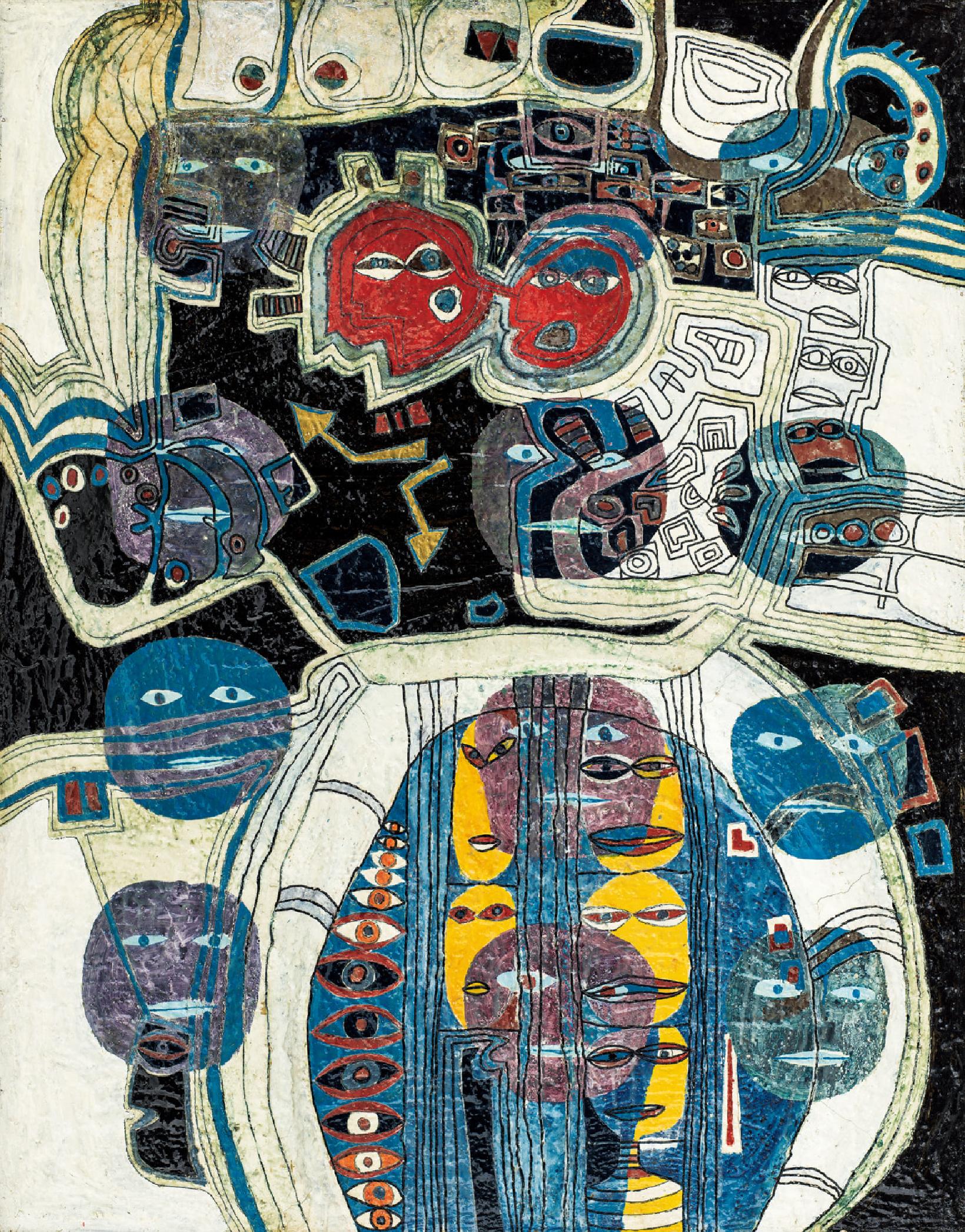
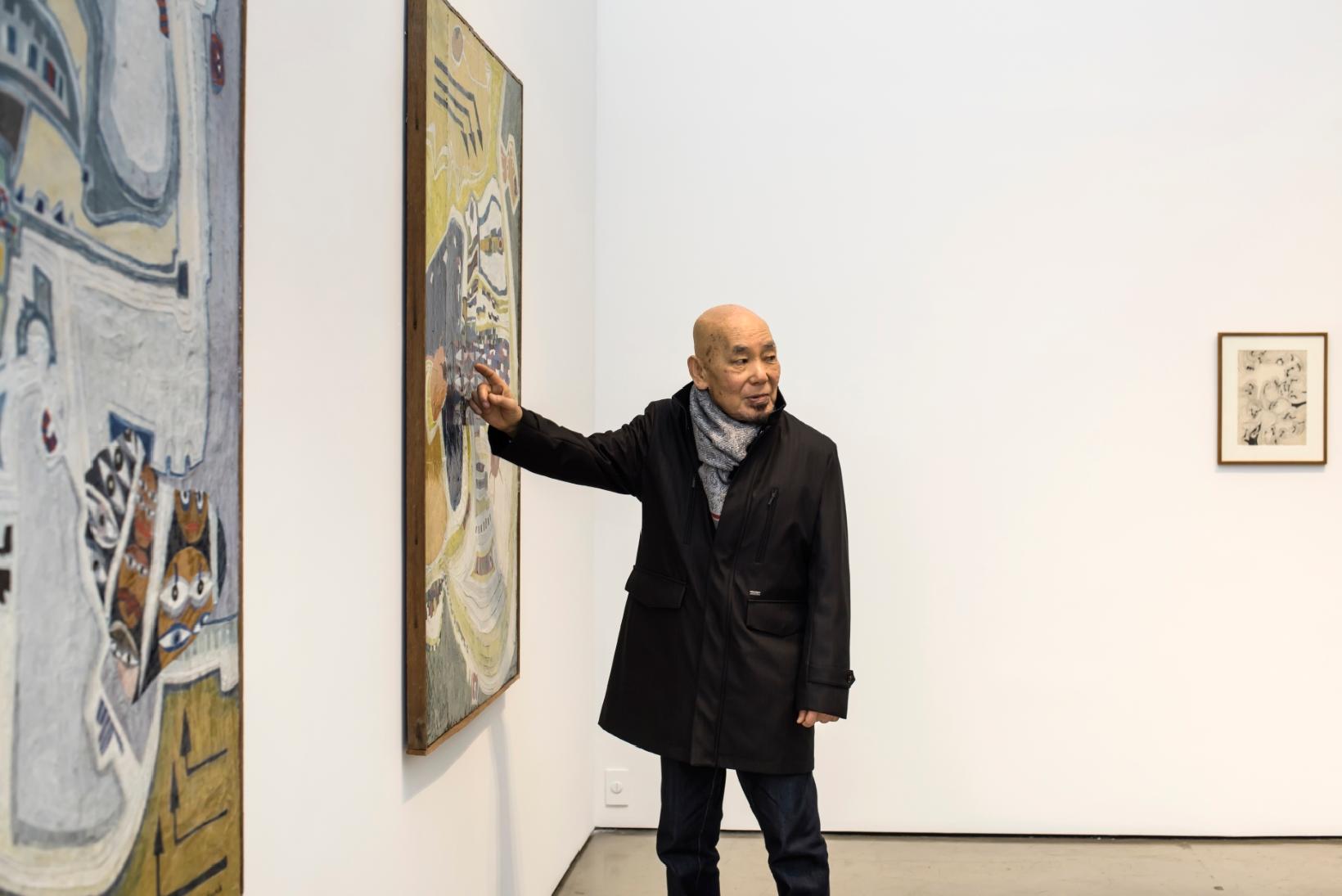
The 1970s marked the solidification of Kwak’s signature conceptual practice, when he explored photography, collage, video, and performance. In 1974, he gained recognition with his President and Kwak series (1974–2008), a bold and provocative work in which he juxtaposed halves of his face with those of U.S. presidents featured on the covers of Time magazine—this series simultaneously ignited significant controversy and attention. The series extended over thirty years, from President Gerald Ford to President Barack Obama, contributing to Kwak’s reputation as an internationally recognized artist. Spanning the late 1970s with his Repetition series, the early 1980s with the Time series, and the Meaninglessness series, which has continued from the late 1980s onward, Kwak explores the tensions between individual and society, reality and consciousness, and media and private self-reflection. His use of ironic humor and cynicism paradoxically questions the duality of the world while exposing the inherent falsehoods behind perceived truths. Notably, in his Repetition series, Kwak applies silkscreen processes, transforming mass media images into the status of art and experimenting with the reassembly of information.
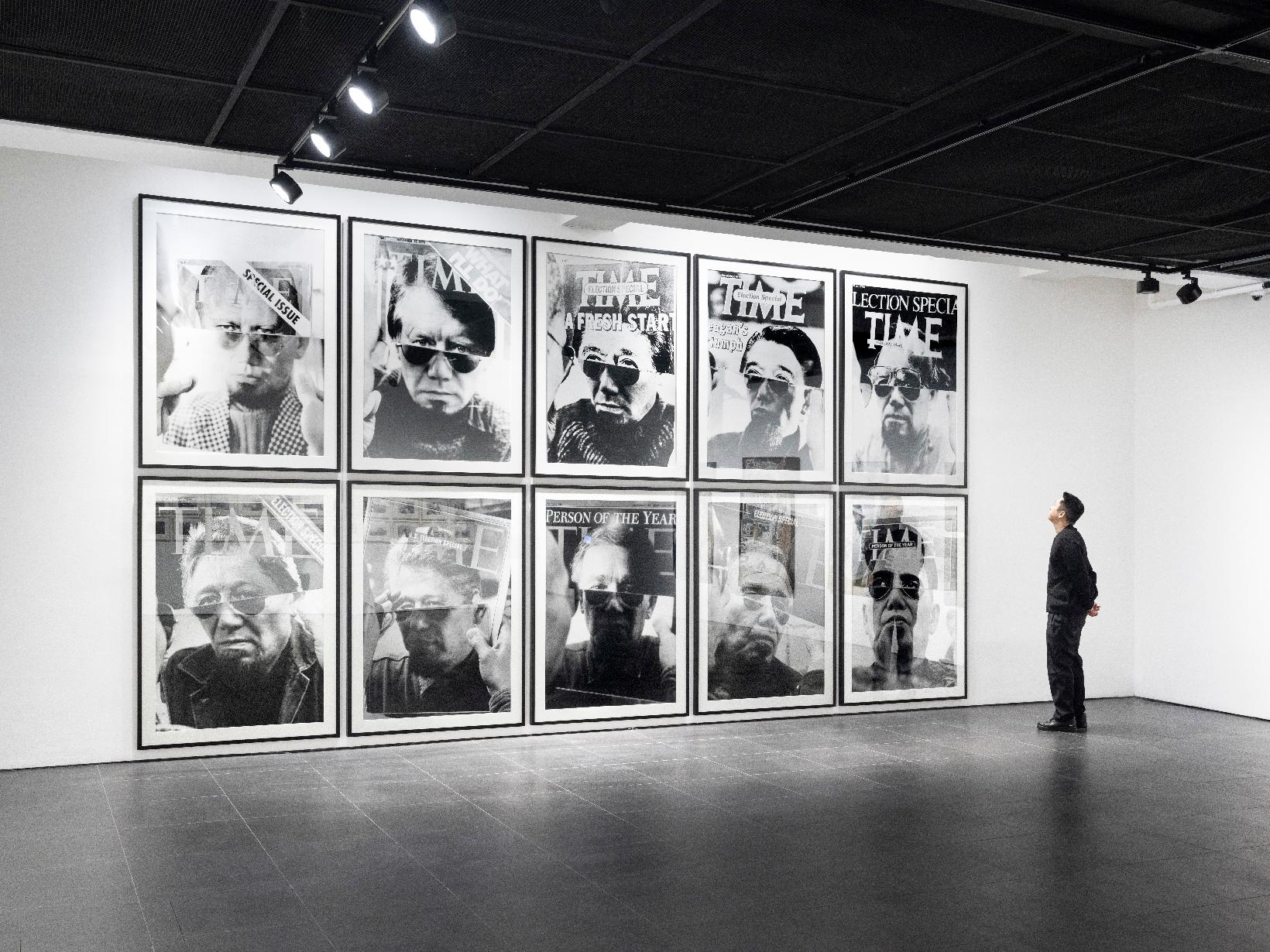
Kwak was recently featured in Gallery Hyundai’s 55th anniversary exhibition as a key figure of Korean experimental art. On April 23, he posed and had a chat at the gallery in front of his representative series, President and Kwak, in what would be his final farewell.
Gallery Hyundai honors Kwak Duck-Jun's journey of endless experimentation and dedication to art, and extends our deepest condolences.
“한국에서도 이질적인 존재, 일본에서도 이질적인 존재, 이 두 가지가 뒤섞인 상태에서 생겨난 독자적인 세계관이 내 작업의 근원이 되었다.” —곽덕준
2025년 7월 26일, 곽덕준 작가가 별세했다. 예상치 못한 갑작스러운 영원한 이별에 가족만의 장례와 애도 기간을 가지고, 8월 7일 오늘에서야 별세 소식을 전한다. 곽덕준(1937-2025)은 한일 미술 교류사에서 중요한 위치를 차지한다. 한국과 일본의 현대미술 분야, 특히 실험미술 전개 과정에서 교두보 역할을 하며 독창적인 미술 언어를 확장해 왔다.
1970년에 제작된 〈계량기〉 시리즈는 바로 그해에, 일본을 방문했던 당시 구겐하임 큐레이터 에드워드 프라이(Edward F. Fry, 1935–1992)에게 공개적인 찬사를 받으며, 한국 작가로서는 가장 이른 개념미술 작업으로 한·일 양국에서 주목받기 시작한다. 곽덕준은 1969년부터 정상화, 박서보 등과 어울리며 한·일 교류 전시에 지속적으로 참여한다. 그는 확고하게 자리 잡은 관념들의 절대성을 무너뜨리고 세계 인식의 무의미함을 독창적인 조형성이 담긴 작업으로 구현해 국제적 명성을 얻었다. 하나의 형식에 얽매이지 않고 독자적인 조형 세계를 구축해 온 작가의 작업은 회화에서 설치·퍼포먼스·영상·사진·판화에 이르기까지 광범위하게 전개되며, 그 실험의 진폭은 한 영역에서도 다양한 양태로 나타난다. 이처럼 곽덕준의 작품세계는 실험으로 점철되어 있다고 말할 수 있다. 또한 그의 작가 노트에서 드러나듯이 “재일한국인(Zainichi Korean)”이 바라보는 역사와 사회에 대한 시선도 곽덕준 예술세계의 주요 키워드다.
갤러리현대는 ‘한국 실험미술 작가 다시 보기’ 프로젝트의 일환으로 한국 미술가로서는 가장 이른 시기의 개념미술가로 알려져 있으며 한·일 양국의 젊은 작가들에게 큰 영향을 끼친 곽덕준의 개인전을 기획했다. 2015년 개인전에서는 그의 대표적인 개념미술을 소개했으며, 특히 일본 현대 미술계에서 존재감을 드러내는 계기가 된 〈계량기〉 시리즈의 일부를 재제작하여 선보였다. 2018년 개인전은 그의 1960년대 회화를 재조명하며, 개념미술가로 활동하기에 앞서 재일한국인이라는 자신의 정체성과 죽음과 사투를 벌였던 작가의 치열한 예술 정신을 확인할 수 있는 전시로 기획되었다. 이후 갤러리현대는 곽덕준을 한국의 대표적인 실험미술 작가로 국제 비엔날레 및 해외 아트페어에 지속적으로 소개해 왔다.
곽덕준은 1960년대 중반에 일본 전통 염색 기법을 활용한, 독특한 화법의 초기 회화 작업을 선보이는데, 이 기묘한 유기적 형태의 추상 작업은 1969년에 종결된다. 이 작업은 1970년 내내 개념 미술적 작업을 발표하며 과거의 역사로 봉인되었다가 1998년 도쿄 유라쿠초의 아사히 갤러리에서 열린 전시 《곽덕준의 회화, 또 하나의 60년대》를 통해 최초로 세상에 공개되었고, 2014년에 오사카 국립국제미술관에서 열린 초대 개인전 《곽덕준, 1960년대의 회화를 중심으로》를 통해 큰 반향을 불러일으켰다. 이어서 2022년 광주 비엔날레에서는 재일한국인이라는 정체성과 그의 이전 작업 세계와는 차별화된 독특한 회화 작업으로 다시 한번 세계의 주목을 받은 바 있다.
본격적으로 개념작업을 시작한 1970년대는 곽덕준을 상징하는 작품세계가 서서히 자리 잡기 시작하는 시기로, 작가는 사진·콜라주·비디오·퍼포먼스 등의 작업을 전개하였다. 작가는 1974년 대표작 〈대통령과 곽〉을 통해 본격적으로 주목받기 시작했다. 『타임(TIME)』지 표지를 장식한 역대 미국 대통령의 얼굴 절반과 자신의 얼굴을 결합하는, 단순하면서도 대담한 개념을 기반으로 한 이 작업은 큰 화제를 불러일으키며 논란을 야기했다. 〈대통령과 곽〉 시리즈는 제럴드 포드(Gerald Ford)부터 버락 오바마(Barack Obama)까지, 미국의 역대 대통령을 소재로 삼십 년 넘게 이어지며 그의 명성을 국제적으로 널리 알리는 계기가 되었다. 1980년대의 〈반복〉 〈타임〉, 1990년대의 〈무의미〉 시리즈 등을 경유해 오늘에 이르기까지, 곽덕준은 자신만의 아이러니한 유머와 냉소를 동원해 사회와 개인의 관계, 현실과 의식, 미디어와 개인적 사유의 거리라는 문제를 일관되게 풀어내며 세계의 이중성을 역설적으로 되묻고 진실의 허구성을 폭로한다. 특히 〈반복〉 시리즈에서는 실크스크린 기법을 활용해 대중매체 이미지를 예술로 변환하며 정보의 재구성을 시도하였다.
작가는 갤러리현대 55주년 기념전에 한국실험미술을 대표하는 작가로 소개되며 4월 23일, 갤러리현대 전시장에서 그의 대표작인 〈대통령과 곽〉 연작 앞에서 포즈를 취하며 담소를 나누었고, 그게 마지막 인사가 되었다.
갤러리현대는 곽덕준 작가의 예술을 향한 끊임없는 도전과 헌신의 여정을 기리며, 애도의 마음을 전합니다. 삼가 고인의 명복을 빕니다.